
A Guide to Car Warning Lights
By Anna Jones at Eversure,
27th February 2025, 20 min read
Hearing a ping and noticing a new symbol on your dashboard can be alarming. Instead of ignoring it or immediately rushing to the garage, take a moment to read this guide and understand what the icon means.
Dashboard warning lights are designed to inform you about your car’s health, and whilst they can be concerning, it’s important to know how to respond appropriately. This guide covers the meaning of car warning lights, why they appear and what you should do if you see them.
Warning lights, more often than not, indicate minor issues, but on rare occasions, they could signal a more serious problem that requires immediate attention. If you're ever unsure or your car becomes unsafe to drive, having breakdown cover (whether annual or single trip European coverage) means you have support when you need it.
What Are Dashboard Warning Lights?
Dashboard warning lights follow the traffic light colour system to convey the urgency of the issue:

- Green: Indicates the system is functioning correctly or is in use. These are normally information only then you don’t need to worry about these.
- Yellow/Amber: Suggests a non-critical issue that requires attention soon. It is important to check it out but it’s usually not urgent.
- Red: Signals a serious, potentially dangerous problem. If you save this, stop driving as it is safe to do so.
- Blue: Found in some cars; typically related to high beam headlights.
What To Do When You See A Warning Light
It can be tempting to either ignore the symbol or panic, but a calm response is best. Start by checking your vehicle’s user manual to identify the symbol and its meaning as the icons can vary depending on the make and model of your car.
Common Warning Lights
Here are the common warning lights that you might encounter whilst driving. Knowing what each typical warning light means will allow you to respond confidently and prevent damage to your vehicle.
Red Warning Lights
These are the warning lights it is most important you pay attention to.
Battery Warning Light
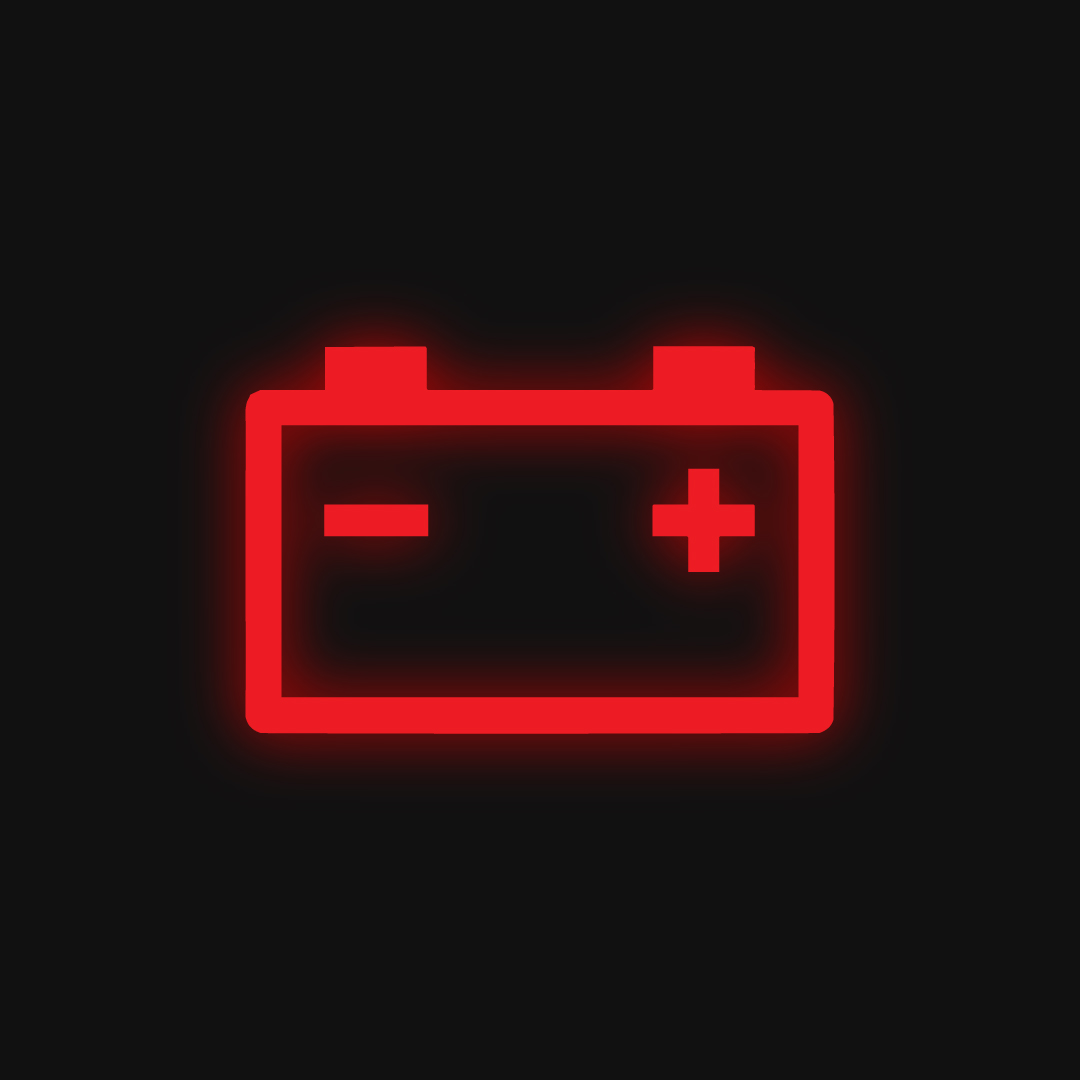
If the battery warning light remains on after starting the engine, it may indicate an issue with your vehicle's electrical system. Possible causes include a faulty alternator, damaged wiring, or a poor electrical connection. This means your car isn’t charging whilst driving which could lead to the battery draining and the engine eventually stopping.
If you see this light, turn off any non-essential devices that use the battery such as the air conditioning, radio, charging devices, sat navs and heated seats. It’s not advisable to turn off your engine immediately, as your car may not restart, Instead, find a safe place to stop and check the health of your battery.
Battery failure is one of the most common cause of breakdowns. If your battery completely drains, then nothing in the car will work – try to get to a nearby garage before that happens. If your car does run out of charge then you can try to jump start it.
Brake System Alert
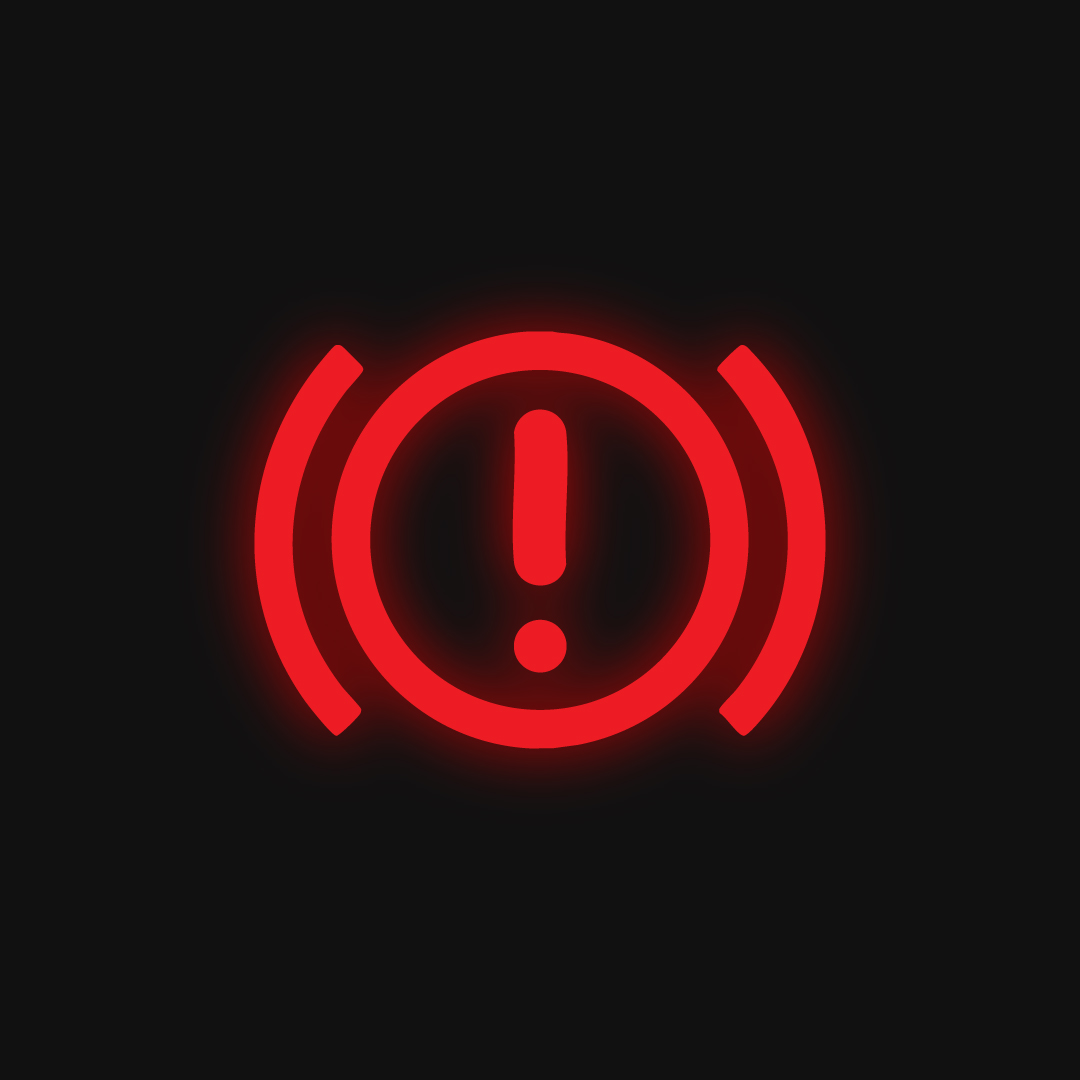
If the brake system alert light comes on whilst you are driving, you have probably left your handbrake on so start by checking your handbrake is fully released. If the handbrake is off and the light remains on, it could mean you’re low on brake fluid. Check the level – if it is below the minimum mark, you may have a leak. The light could also indicate a sensor fault or that your brake pads need replacing. Alternatively, there could be a more serious issue with your hydraulic brake system.
If you notice a difference in your brakes, such as a spongy pedal or one that sinks to the floor, pull over immediately and contact your breakdown service. If the brakes feel normal, it’s still a good idea to have them checked.
If the ABS warning light is also illuminated, it likely indicates a malfunction in your braking system, potentially affecting brake performance. In this case, the Electronic Brake Force Distribution (EBD) warning light may also turn on.
As your brakes are one of the most important safety features of your car it is important you act as soon as you see the warning light. When it is safe to do so, pull over and stop. Unless you know how to check the brake fluid levels, you will need a professional to take a look.
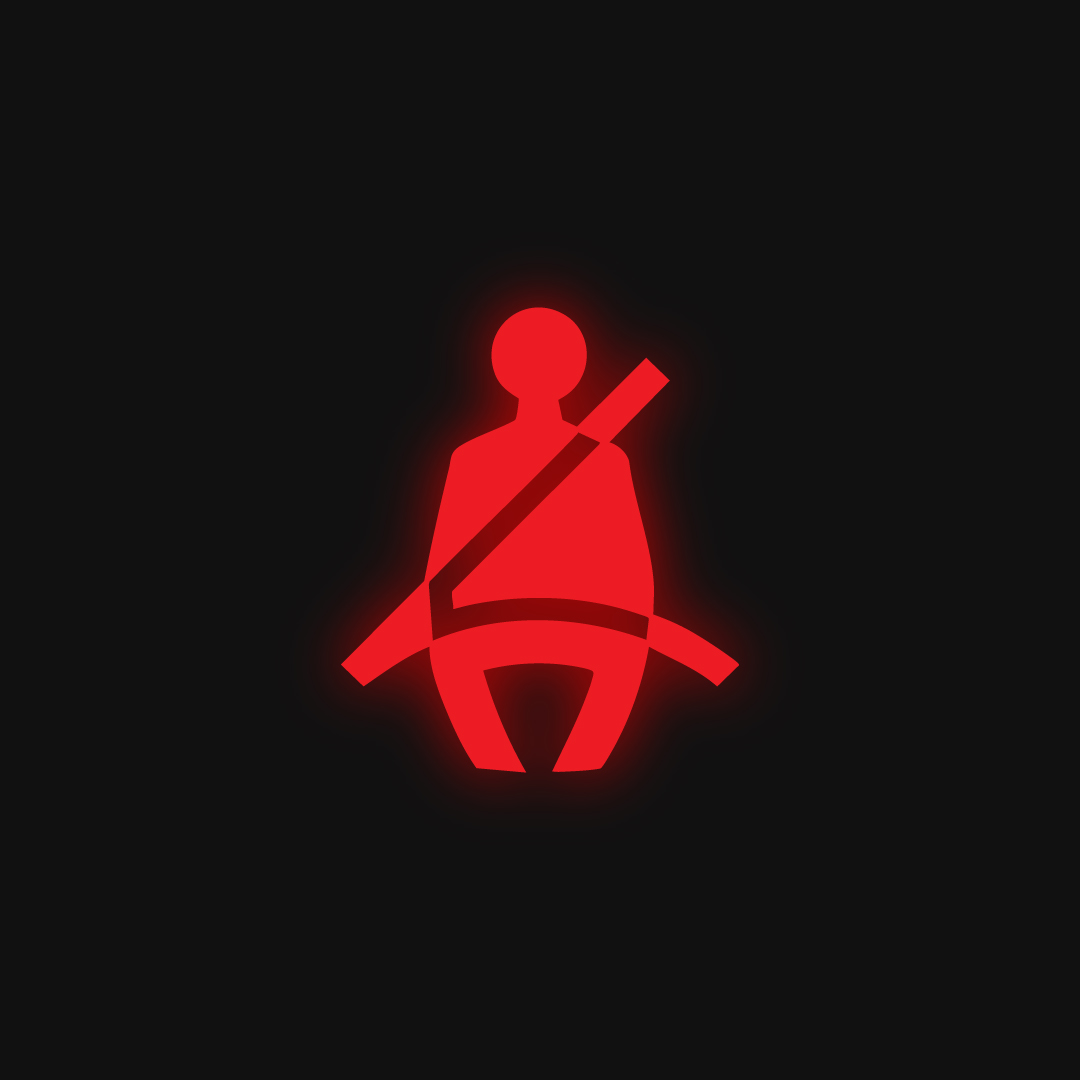
Seat Belt Reminder Light
This light comes on if you or a passenger is not wearing a seatbelt whilst the vehicle is in motion. This is an easy issue to resolve – make sure everyone in the car is wearing there seatbelt as required by law.
Power Steering Warning Light

The most common cause for this light is a lack of power steering fluid, although it could also indicate a more serious issue with the system.
If the light comes on, pull over and switch off your engine. Check the powering steering fluid levels. If the light remains on you will need to seek assistance from a local garage as it might not be safe to continue driving.
For electric powered systems, this issue may be resolved by turning the car off and back on again after 30 seconds.
If you’ve recently disconnected the battery, the steering system might need to be reset. To do this, turn the steering wheel fully left and right before driving at a low speed for a short distance.
If the light remains on, then it could suggest a more serious issue with the power steering system so you should take your car to get checked as soon as possible.
Without proper power steering, your car will be more difficult to steer and manoeuvre so you will need to drive with extra caution. However, it’s essential to have the issue addressed as soon as possible. Driving at high motorway speeds without power steering assistance is dangerous so should be avoided.
Engine Temperature Warning Light
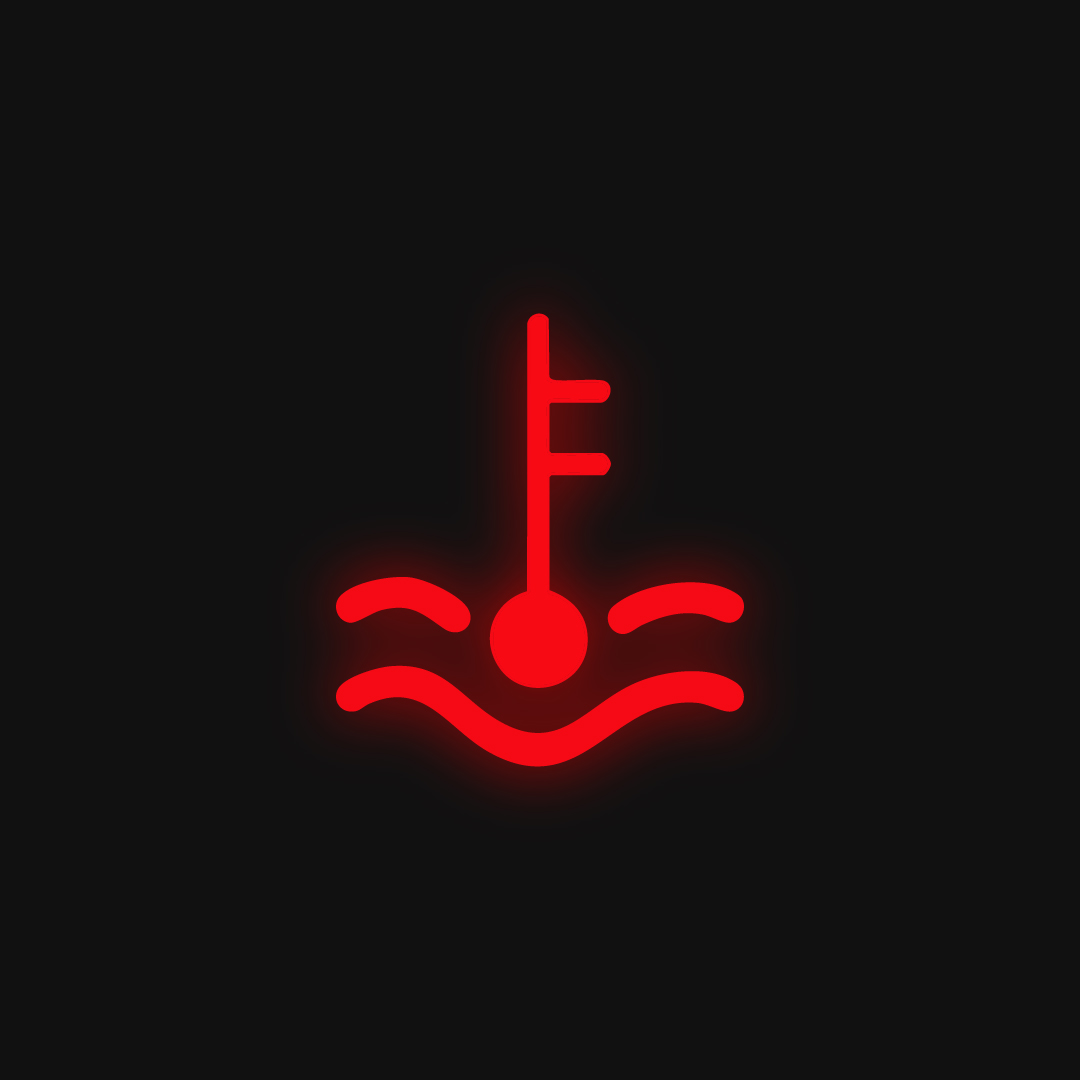
If you see this warning, it means your engine is overheating. This could be due to low coolant levels. Coolant fluid works by absorbing heat from your engine and dispersing it through the radiator to prevent the engine from overheating. This means that without sufficient coolant, your engine can overheat. Your engine overheating can be dangerous as if it gets hot enough, the engine could weld itself together.
To check the levels, you need to first allow the engine to cool down. Once it’s cool, check the coolant levels and then top them up if needed. Whilst you are under the hood, check to see if there are any obvious leaks. If the light stays on after topping up, there might be a serious underlying issue such as a head gasket failure so you should visit a garage as soon as possible.
Avoid making any long journeys without sufficient coolant. Always top up the coolant as soon as possible, otherwise you risk causing serious damage to your car.
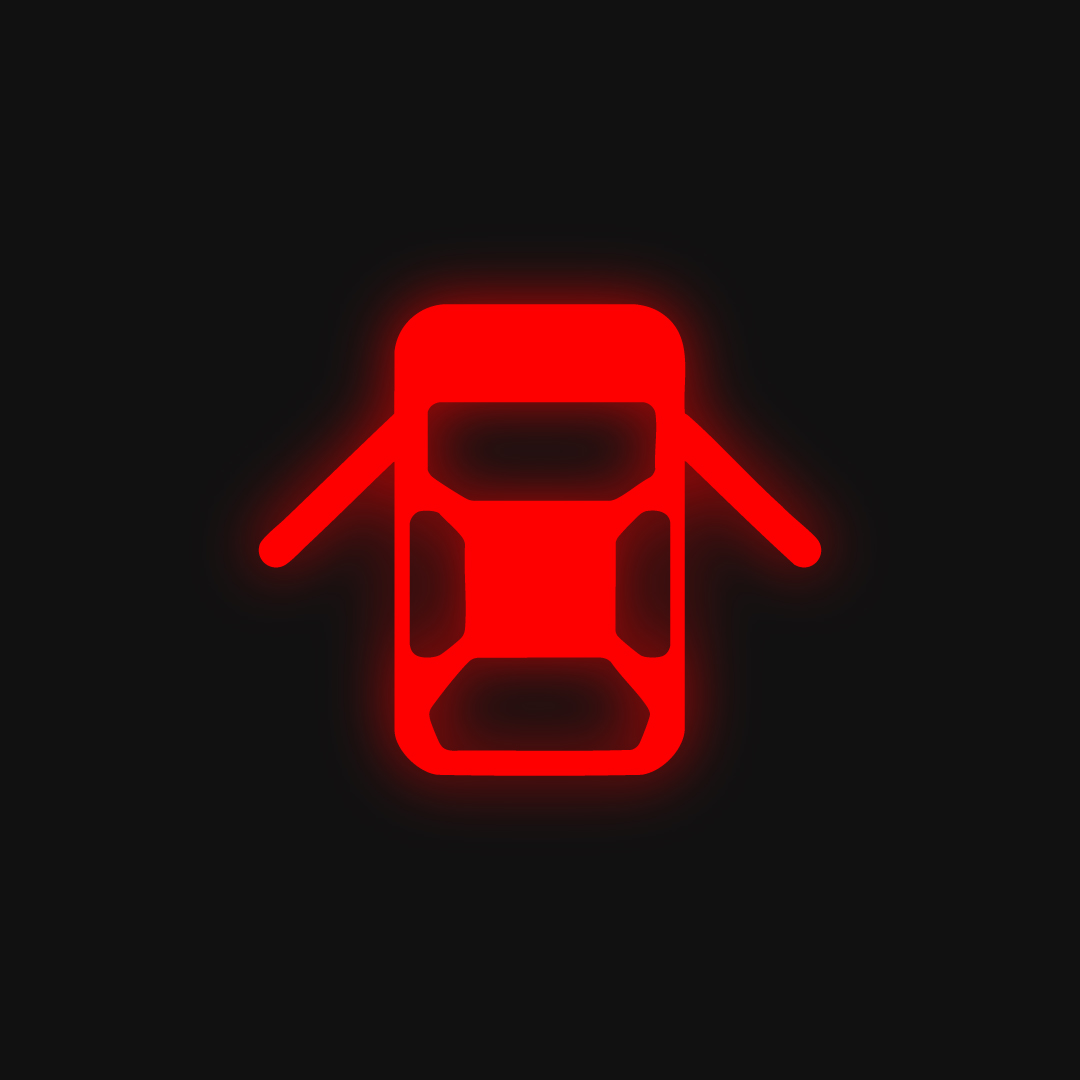
Doors Open Reminder Light
This light indicates that a door, boot or bonnet is not securely closed. Pull over and check that all doors are shut properly. If you have children in the back seats, it is a good idea to activate the child safety lock to prevent them from opening doors whilst the car is in motion.
Airbag Fault Light

If you see this light, it means there is a problem with one or more airbags, the seat belt pretensioner (which tightens the belt in the event of a crash) or the front passenger occupation classification system. This is a critical safety issue, and you should have it checked by a mechanic immediately. A malfunctioning airbag could either fail to deploy in an accident or deploy accidentally, both of which could cause harm.
As the airbag system is such an important safety vehicle, you shouldn’t drive your vehicle if the red airbag warning light is on.
Yellow/Amber Warning Lights
These are the warning lights that highlight non-critical issues that will need attention soon.
Check Engine Light
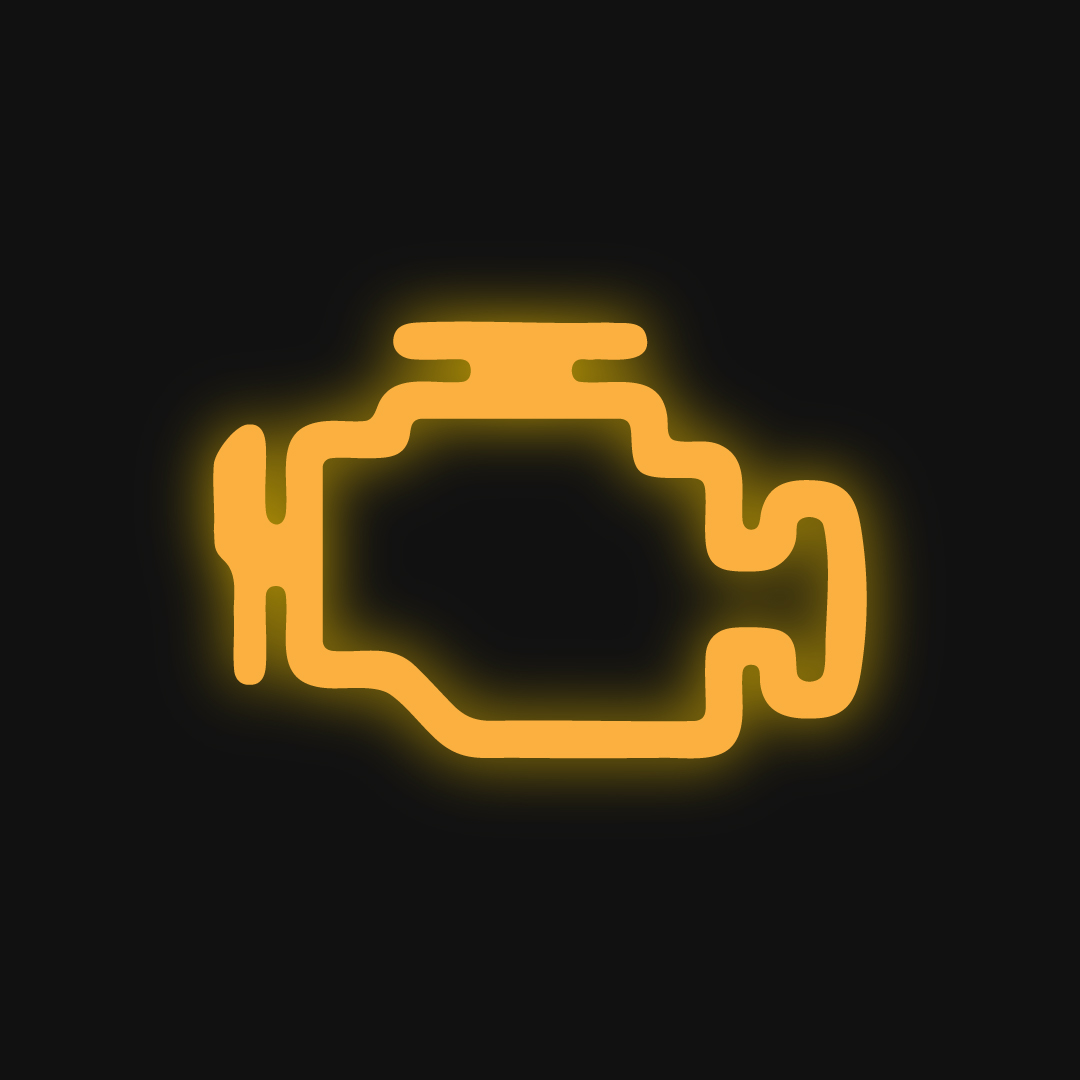
The check engine light, or engine management light, comes on when the sensor detects an issue with your engine. When it comes on, it may be accompanied by a drop in power or engine stuttering as you press the accelerator. This could range from something simple, like an incorrectly fastened fuel cap, broken electrical sensor or loose wire, to more significant mechanical issues such as a failing catalytic converter or a problem with the emissions system. Ignoring the light could lead to irreparable engine damage so it is best to have the issue checked with a diagnostic tool at a trusted garage to determine the cause.
Tyre Pressure Warning Light

The tyre pressure monitoring system (TPMS) detects a drop in pressure in one or more of your tyres. This could indicate a puncture or simply that your tyres need to be inflated.
Once this light comes on you should check the tyres as soon as you can. Under-inflated tyres can affect your car’s handling and braking distance. If you notice a puncture, either change the tyre or use a sealant. Driving on an underinflated tyre could eventually lead to a tyre blow so you should pump up your tyre or tyres as soon as possible. If the warning light comes back on when you continue driving it could mean you have a slow puncture. If this is the case, you need to get the tyre repaired or replaced.

Diesel Glow Plug Indicator Light
This light indicates that your diesel glow plug is malfunctioning. It’s normal for the light to appear for a second or two when starting the engine, but if it stays on longer, you’ll need to visit a garage for a replacement.
Diesel Particulate Filter (DPF) Warning Light
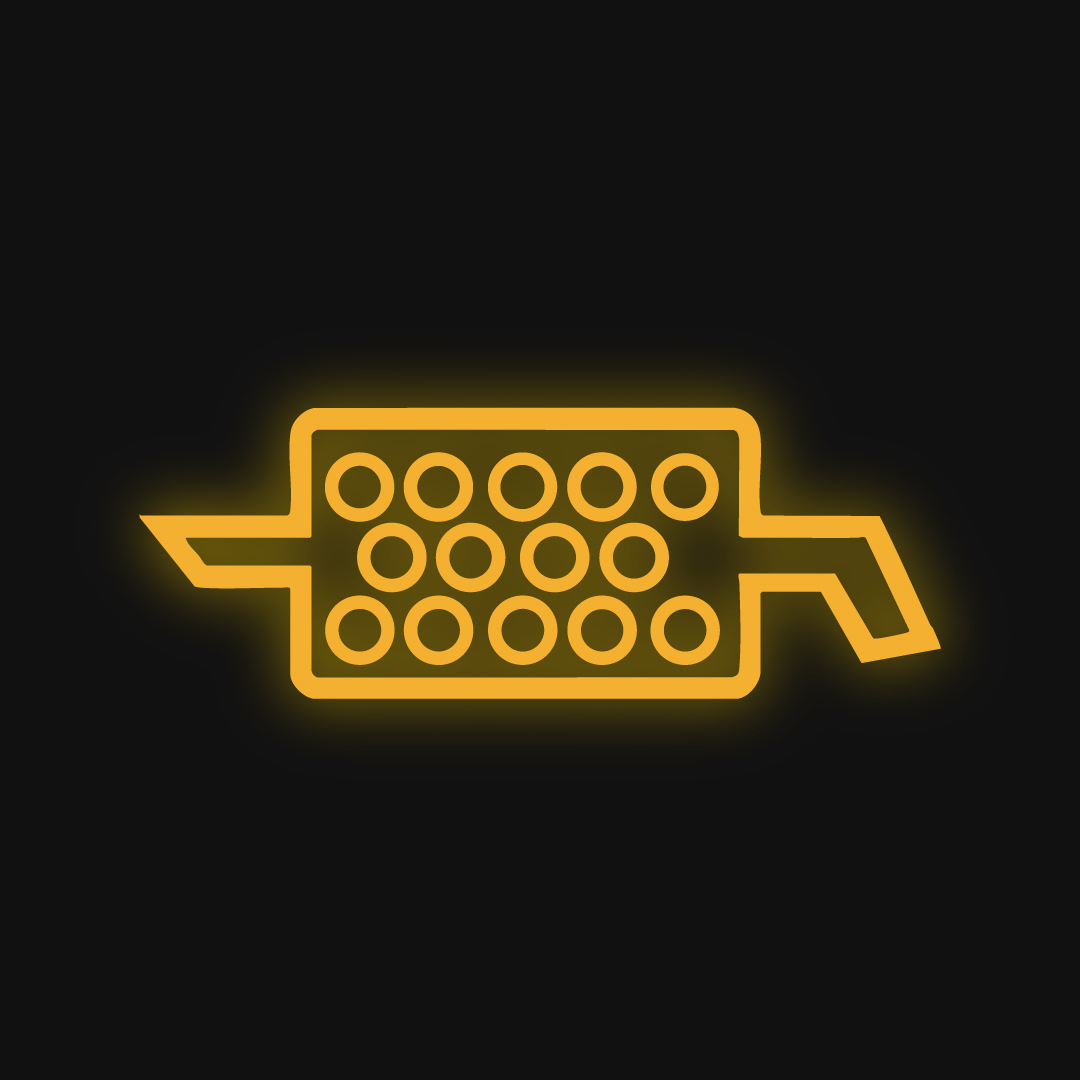
The DPF, or exhaust particulate warning light, affects diesel cars. The filter traps harmful soot from the exhaust gases to reduce emissions. If you do a lot of stop-start driving, the DPF can become blocked and will struggle to clean itself. This light will come on if the system has become blocked with soot and needs an exhaust repair.
Driving with a blocked filter could cause serious damage to your car. To clear the blockage you should drive at above 40 mph for around 10 minutes. If the DPF warning light remains on, you should go to a garage as soon as possible to get it replaced.
ABS Warning Light
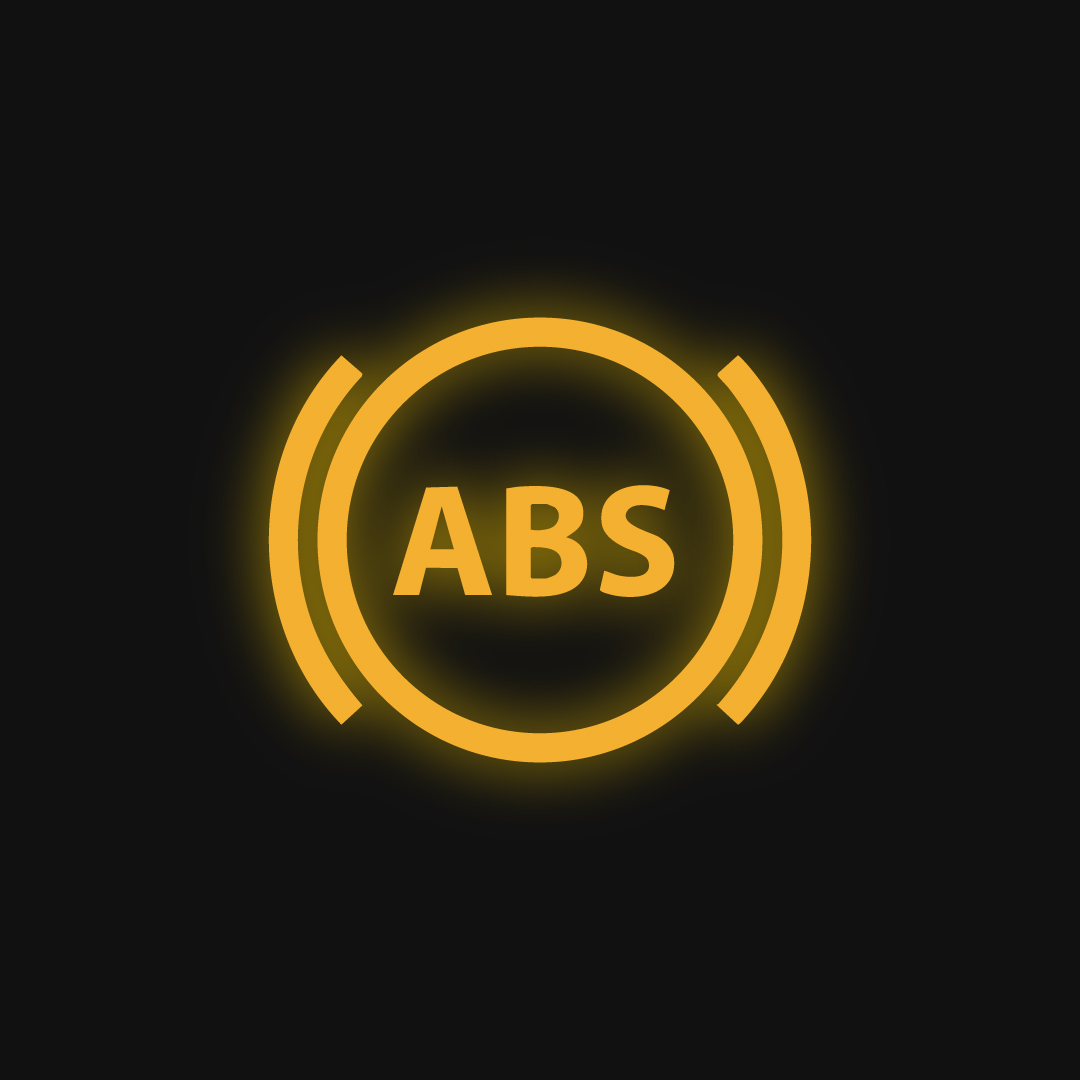
The ABS warning light indicates a fault with your car's anti-lock braking system. This system helps your car stop safely during emergencies, but if the light comes on, it could mean the system is not functioning properly.
If the brake pedal pulses during hard braking, the ABS is working. If it doesn’t then your emergency braking system is compromised, and you should have your car checked as soon as possible.
If the ABS light comes on by itself you should still have normal, unassisted braking so it will be safe to continue your journey. However, you should keep your distance from other cars and get it checked as soon as possible.

Limited Electric Power Indicator Light
If this light comes on, your electric vehicle (EV) or plug-in hybrid (PHEV) is close to running out of charge. It will begin using petrol or diesel, but if it’s an EV, you should plug in your vehicle at the nearest charging point. Keep an eye on the charge gauge during your journey and head to a charging station if necessary.
Electronic Stability Programme (ESP) Warning Light
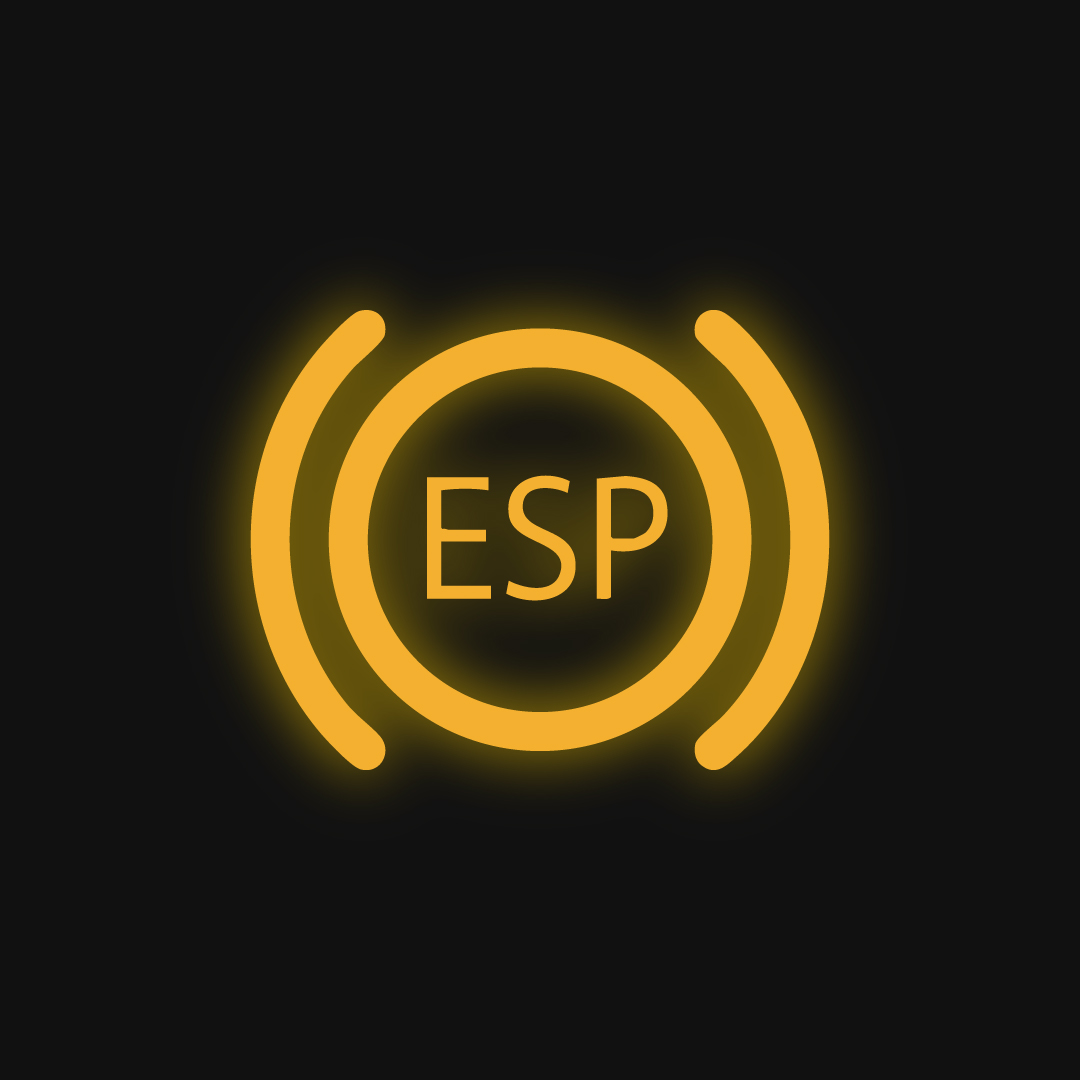
The ESP, otherwise known as electronic stability control (ESC) helps reduce the risk of skidding. If the light is flashing it means that the ESP system is intervening. This might happen when you are driving on wet or slippery road surfaces. If the light stays on in normal driving conditions, it will mean there is a fault with the system and it is not working properly.
If the ESP warning light appears alongside the word 'OFF’, you may have manually deactivated the system, possibly by accident.
To verify, try turning off the engine and restarting it. If the light stays on, then you will need to have the system inspected by a professional as the ESP is a crucial safety feature.
How Do I Reset or Turn Off Car Warning Lights?
If a warning light remains illuminated after a repair, your car’s onboard computer might need resetting. To do this, open and close the bonnet, then turn the engine on and off. In some cases, you may need to disconnect and reconnect the battery.
If the light persists, the issue could still be present, or there may be another underlying problem. A mechanic can reset the system and verify everything is functioning correctly.
Final Thoughts
Car warning lights can appear unexpectedly, but the key is to stay calm and assess the situation. If the warning lights do end up leading to a breakdown, our reliable breakdown cover has your back. With our insurance, you won’t be alone when things go wrong.